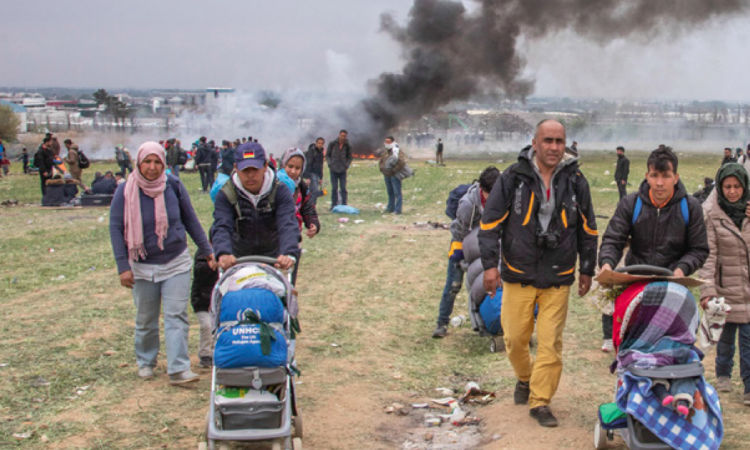Internal migration is important almost everywhere and in some countries is far greater than international migration. Internal migration is human migration within one geopolitical entity, usually a nation-state. Internal migration tends to be travel for education and for economic improvement or because of a natural disaster or civil disturbance. Cross-border migration often occurs for political or economic reasons. A general trend of movement from rural to urban areas, in a process described as urbanisation, has also produced a form of internal migration.
The number of international migrants is estimated to be almost 272 million globally, with nearly two-thirds being labour migrants. This figure remains a very small percentage of the world’s population (at 3.5%), meaning that the vast majority of people globally (96.5%) are estimated to be residing in the country in which they were born.
Most migrants do not cross-national borders, but instead move within their own country: 740 million people are internal migrants, almost four times the number of international migrants. Close to 120 million people were estimated to migrate internally in China in 2001 against a mere 458,000 people migrating internationally for work. In Viet Nam roughly 4.3 million people migrated internally in the five years before the 1999 census whereas the number of international migrants was fewer than 300,000. In India too, internal migration numbers run into millions while international migration is only a fraction of this.
Many countries have experienced massive internal migration
- The United States has experienced the following major migrations:
- A massive internal migration from the eastern states toward the west coast during the mid-19th century.
- Three waves of large-scale migration of African Americans: first from the agricultural south to the industrialised northeast and Midwest in the early 20th century, a second movement in the same direction from roughly 1940 to 1970, and finally a reverse migration from other parts of the country to the urban south beginning in the late 20th century and continuing to the present.
- The depopulation of the rural Great Plains since the early 20th century, with many rural counties today having less than 40% of their 1900 population.
- A steady migration, starting during the Dust Bowl of the 1930s but accelerating after World War II, of all ethnicities toward the Sun Belt of the southern and western U.S.
- An ongoing migration of mostly working- and middle-class people of all ethnicities, but especially whites, from California to other states since 1990.
- The United Kingdom has historically seen several migrations from the north of England to the south, and also from Scotland, Ireland (more recently Northern Ireland) and Wales to England. This was most prevalent during the industrial revolution, and also in the aftermath of the Irish potato famine.
- In New Zealand, the drift to the north has seen the South Island gradually lose population to the main urban area, Auckland, in the country's far north.
- In Philippines, due to a centralised government and almost unequal distribution of government power and funds, people from the provinces head to Metro Manila to look for better jobs and opportunities. This has been continuing since then, although in much smaller numbers now, with Metro Cebu and Metro Davao now increasingly becoming more popular as alternative destination for internal migrants.
- In Italy, during the country's economic miracle in the 1950s and 1960s, the so called "Industrial triangle" of Northwest Italy experienced waves of immigrants coming from Southern Italy, due to the southern portion of the country remaining underdeveloped and stricken with poverty. The peak was reached between 1955 and 1963, when as much as 1,300,000 southern workers moved to the northern industrial cities. After a pause in the 1980s the north-south migration has resumed, this time headed to other areas of the north and Central Italy.
IMAGE CREDIT: IOM

